Taking effective images of Schoenus species
Similar to grasses and other grass-like plants, Schoenus species can be very difficult to identify even with the use of a high powered microscope. Photos, such as those posted on iNaturalist, can be useful in identification, but they generally have to show some key characters with fairly high resolution.
Generally, photos should focus on the following characters:
1) HABITAT: Is the environment where the plant growing wet, dry, flat, on a mountain slope, for example? If possible, a photo showing the general environment with neighbouring plants can be a helpful clue.

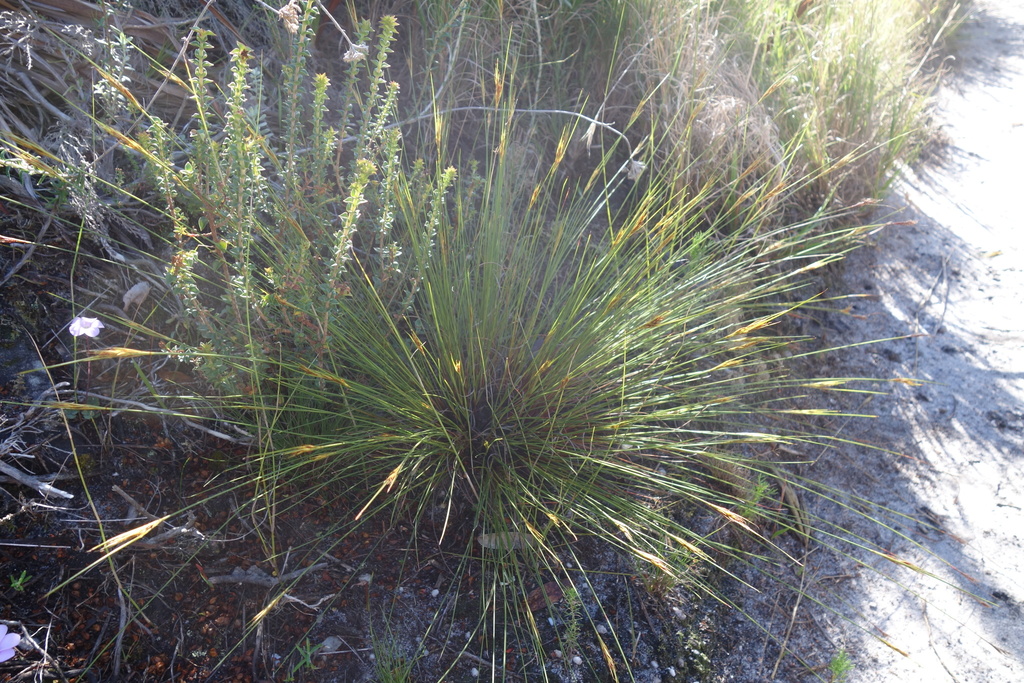
In the left photo, the species is from a wet draw, which is a clue that it might be from the former Epischoenus group or Schoenus ligulatus. The species to the right is from a drier location in a mountainous habitat.
2) GROWTH FORM: How tall is the plant? How big is the tuft? Most Schoenus species will form clumps, but some species (e.g., Schoenus gracillimus) can be spreading.
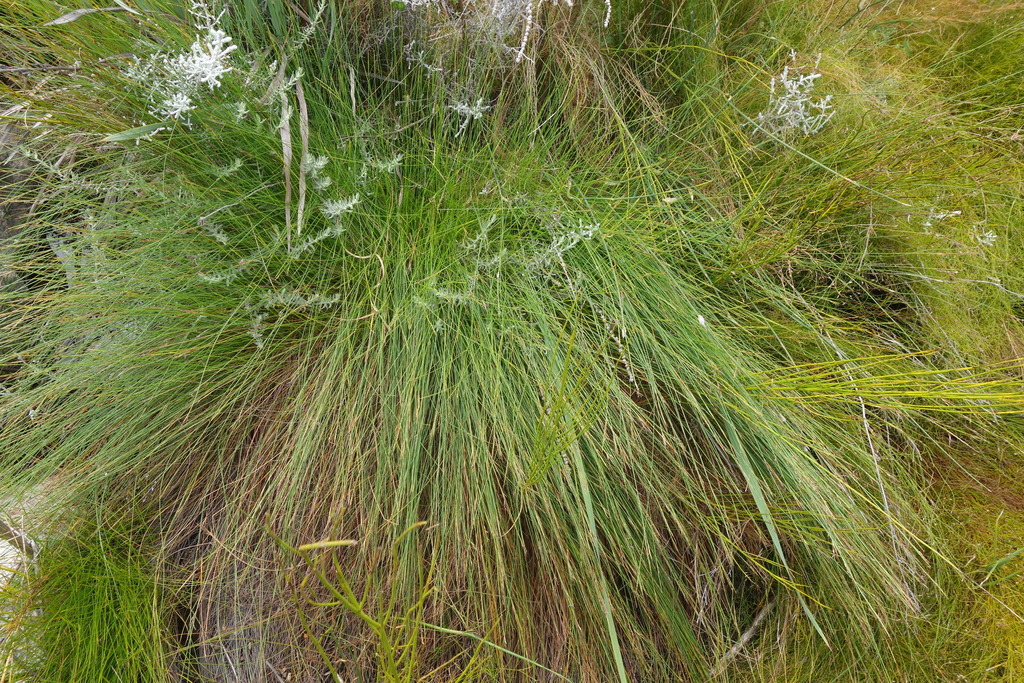
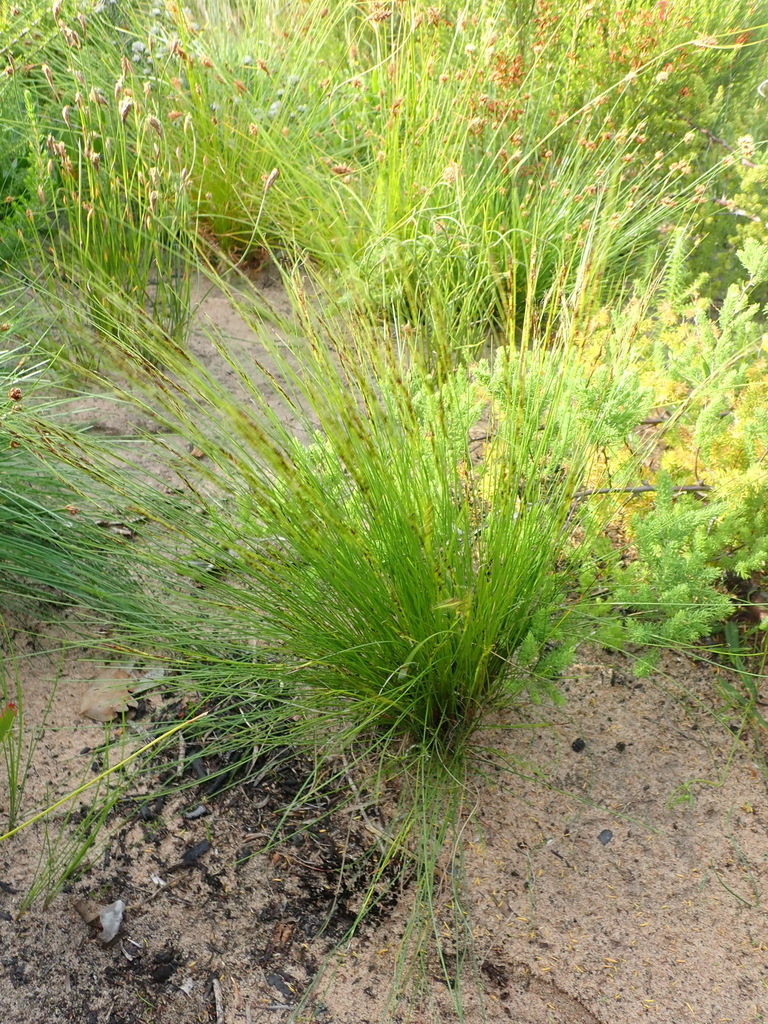
The plant in the left image is somewhat spreading, whereas the growth form in the plant to the right is tufted. The tufted growth-form is very common in this group.
3) INFLORESCENCES: These are the flowering heads. A CLOSE-UP image of at least one flowering head is imperative for identification. The individual spikelets making-up the flowering head will ideally be in a mature form, but not too old.
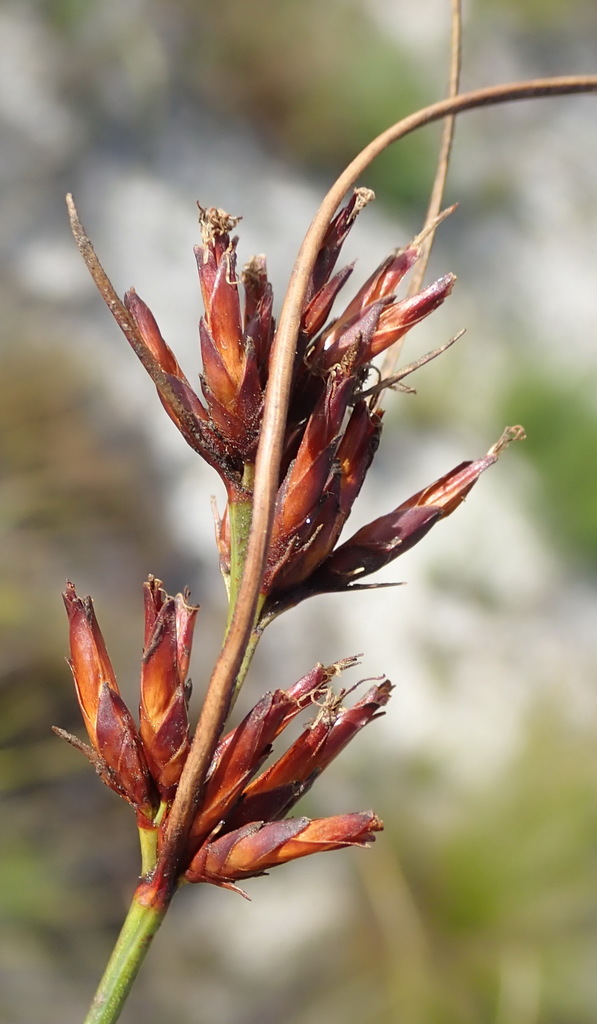
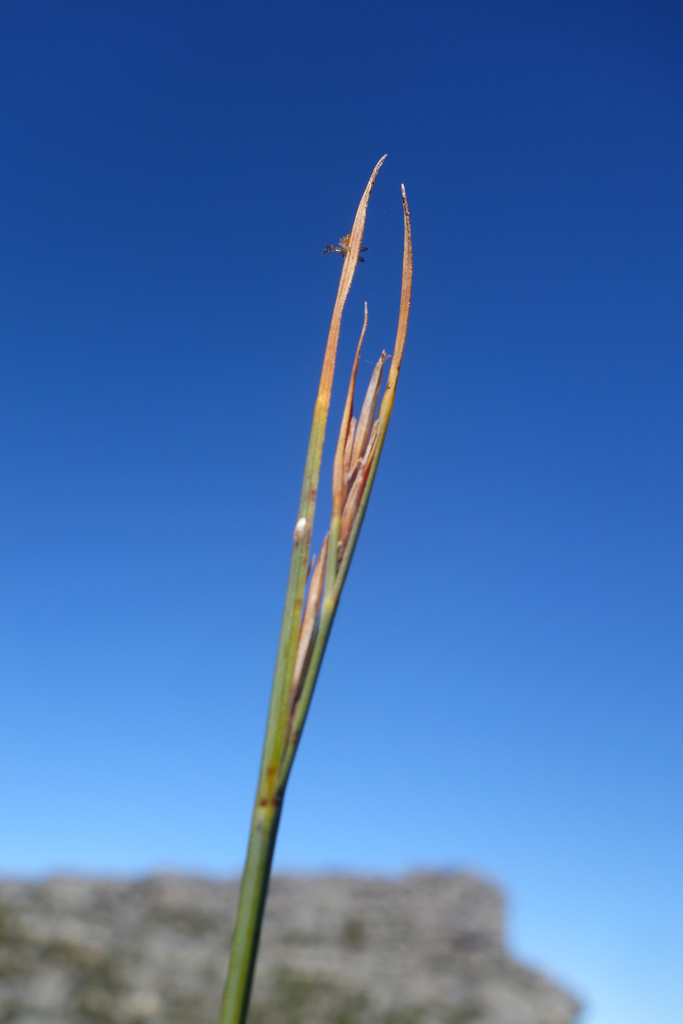
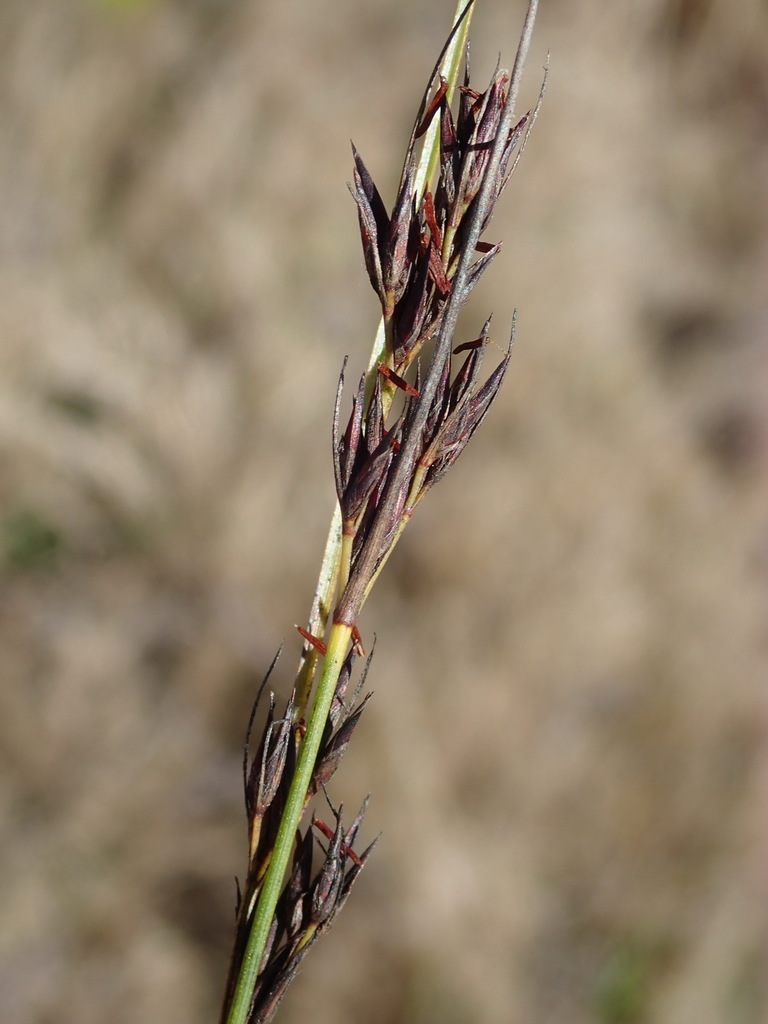
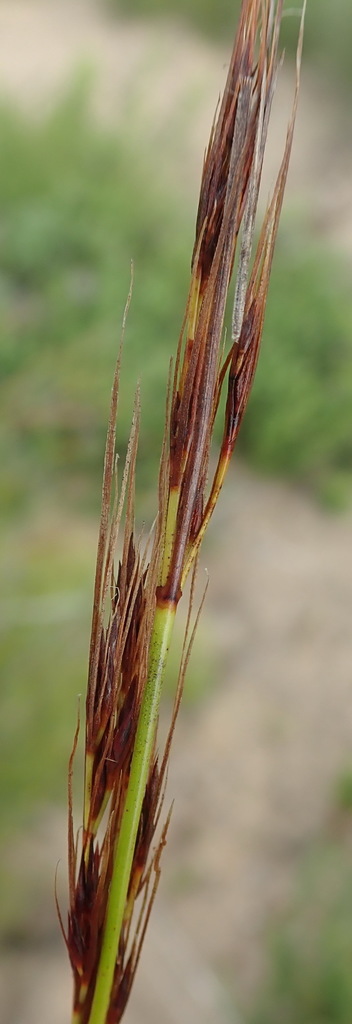
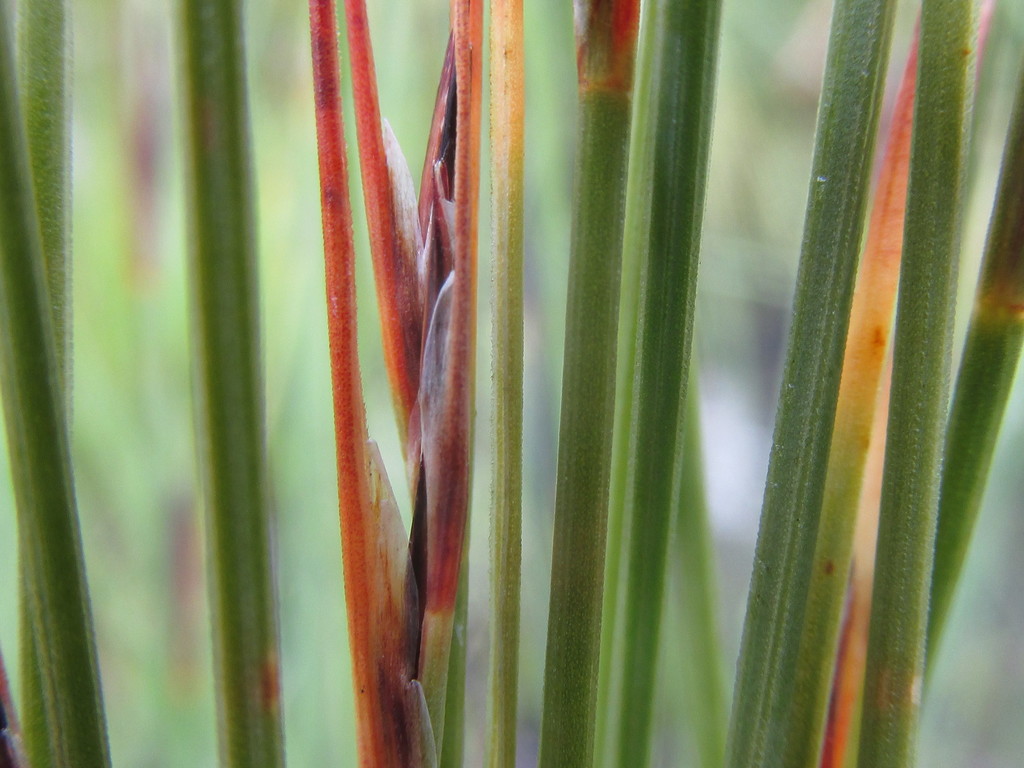
The overall form, length and width of the inflorescence is important when making an identification, as well as characters such as whether the inflorescence is sticky or if it has auricles (membranaceous 'flaps'). If one looks carefully at the image to the far left, you will notice that it is sticky (characteristic of some species in the Schoenus compar - Schoenus pictus group). The image to the far right has a membranaceous flap at the base of each individual flowering head. This character can be hard to see since these flaps are rather transparent.
4) SPIKELETS: These are the composite of flowers that are the individual parts of the flowering heads. They can be very difficult to focus in on with your camera, so sometimes it is best to pick them off of the flowering heads and take a picture of them on a piece of paper. It is even better if you have a small ruler to function as a scale.
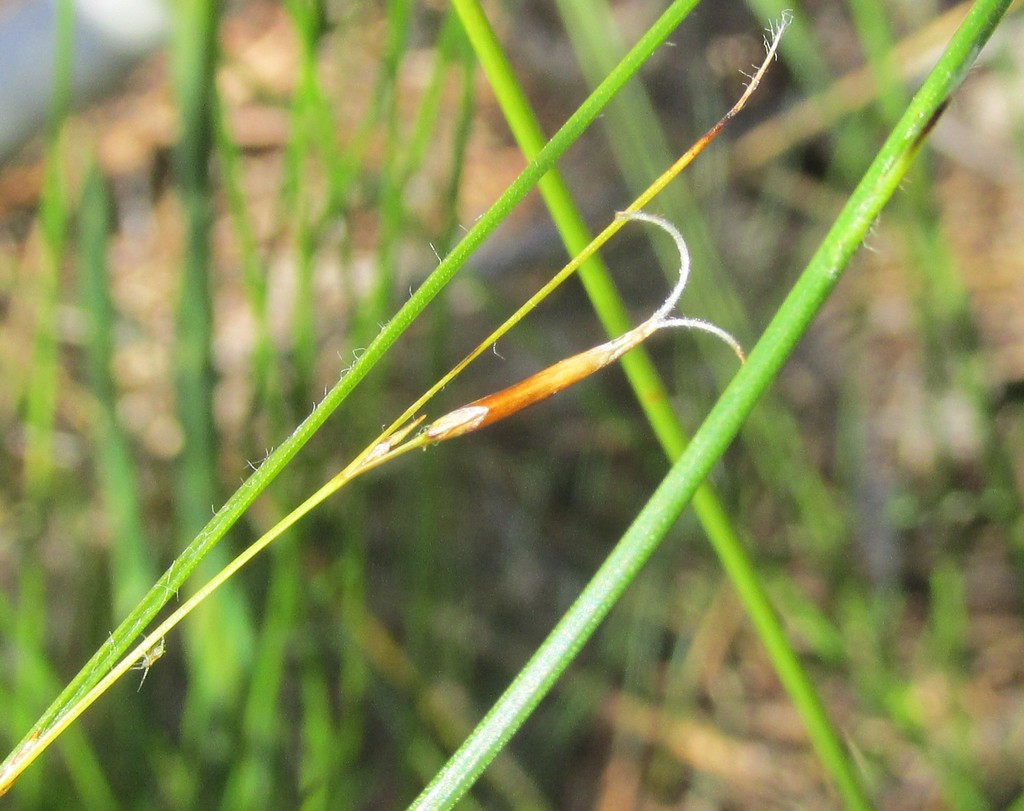

A high quality view of the spikelets is often very important in making an identification. Important characters include length, width, and shape. Spikelets have glumes which are the bracts associated with the individual flowers. If you zoom into the image on the right, you will see that there are about four to six glumes for each spikelets. Another important character of the glumes is whether they have reddish-purplish spotting, such as the Schoenus bolusii image to the right.
The image of the spikelet on the following Wikipedia page illustrates spikelets with glumes in more detail: https://en.wikipedia.org/wiki/Schoenus_arenicola
5) BASES OF FLOWERING STEMS: This is not the nicest image to take, because it often involves removing a little bit of the plant from the ground. The process can be a little dirty and won't result in the prettiest picture.
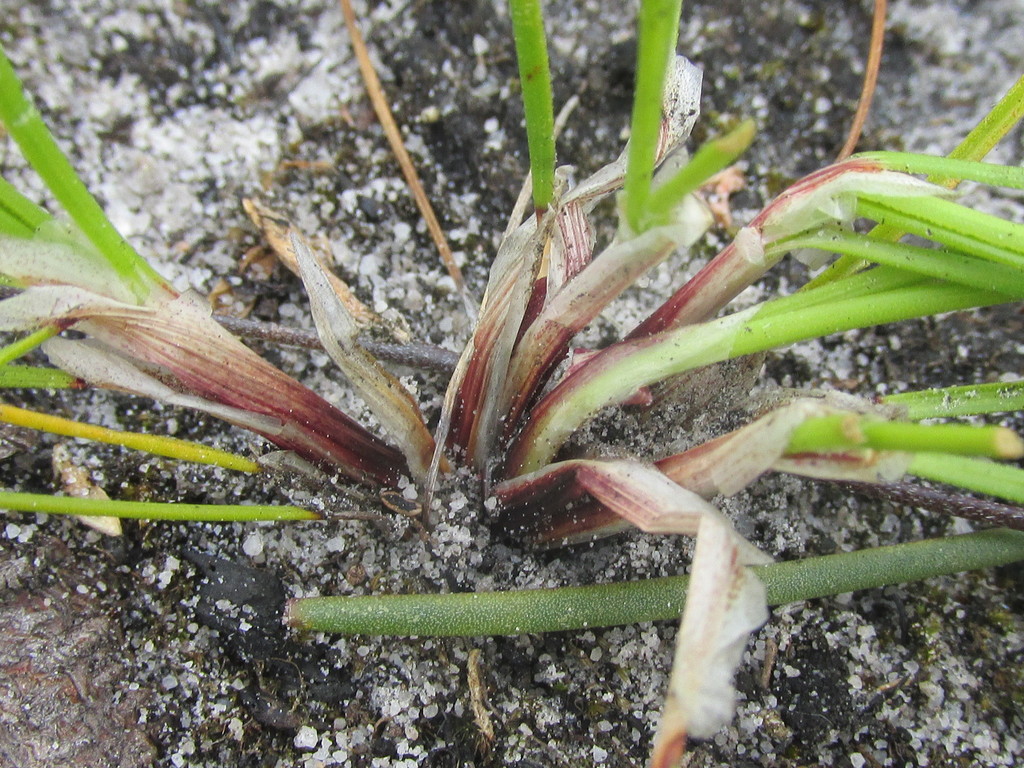
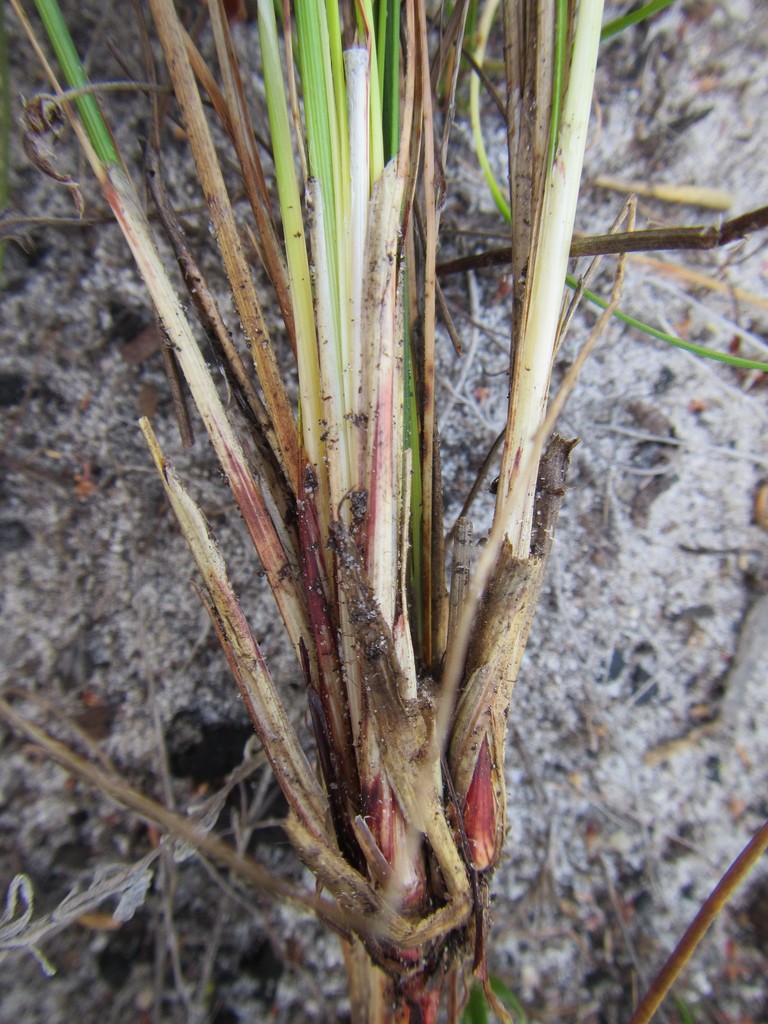
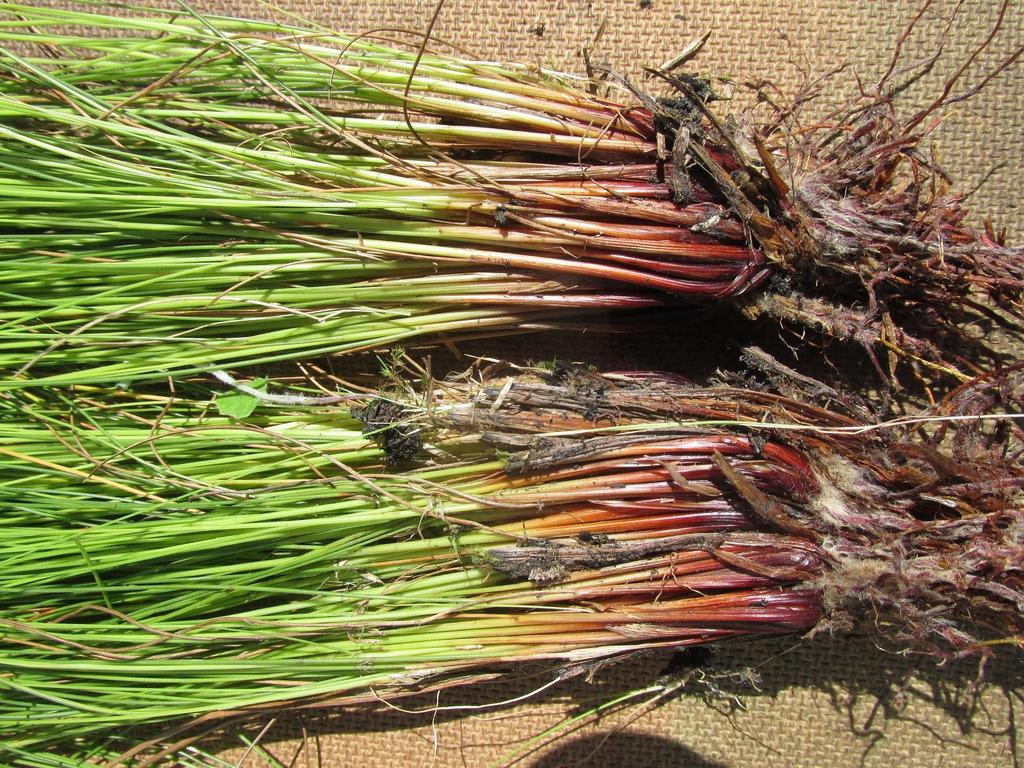
The left and middle images were taken from plants with membranaceous bases, whereas the bases of the flowering stems are more firm in the species in the right.
6) NUTLETS: Photos of the fruits of Schoenus species are useful in identification, especially for species such as Schoenus exilis; however, mature nutlets are not always present on a plant. If you can isolate a nutlet in the field to get an image - GREAT! It will be appreciated.
I thank Doug Euston-Brown and Nicky van Berkel for supplying images for this blog post.
ADDITIONAL RESOURCES
Over the last two years, I have been making a series of Wikipedia and Wikispecies pages which includes images of key characters. This process is ongoing, and I am still not able to make some pages because the respective names still haven't been passed through all of the important nomenclature databases. However, several of these pages exist and show some important illustrative images of key characters, such as spikelets, nutlets and close-ups of flowering stems.
Currently, the best way to access these images is by typing the species name into your web browser.
Good-luck with the hunt!





תגובות
הוספת תגובה